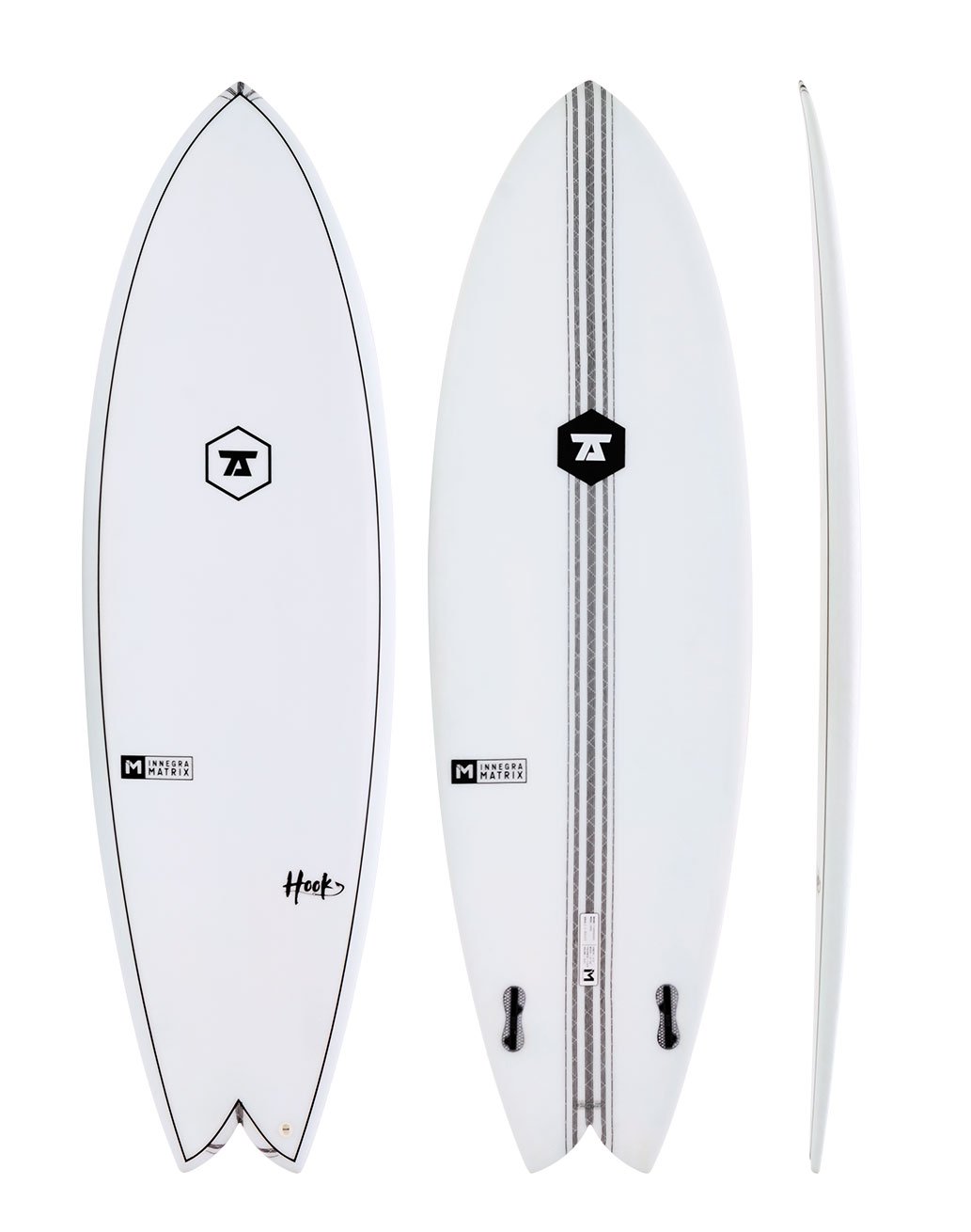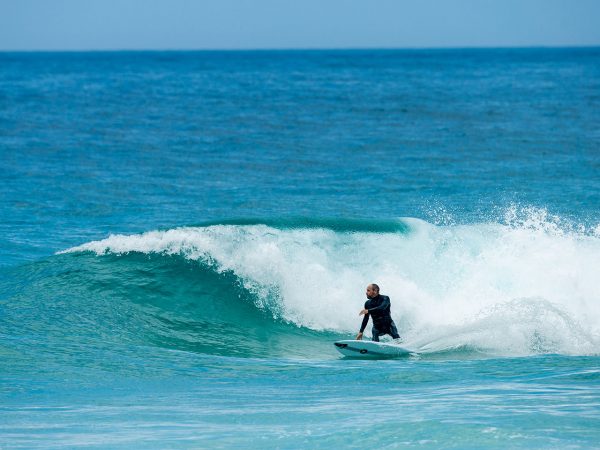Description
NOTE: Fins NOT supplied with the board / Rider weight is based on board volume and intermediate rider skill level
| Length |
Width |
Thick |
Volume |
Fins |
Approx Weight Range |
| 5’10 |
20 5/8″ |
2 1/2″ |
33.40ltr |
FCSII Modern Keel |
80kg / 176lb |
| 6’0 |
20 7/8″ |
2 9/16″ |
35.60ltr |
FCSII Modern Keel |
85kg / 187lb |
| 6’2 |
21 1/8″ |
2 5/8″ |
38.20ltr |
FCSII Modern Keel |
90kg / 1198lb |
| 6’4 |
21 3/8″ |
2 11/16″ |
40.60ltr |
FCSII Modern Keel |
95kg / 209lb + |
| Construction |
Innegra MatrixCreated in collaboration with Colan Australia, Innegra Matrix (IM) is an exciting new material that’s exclusive to GSI and the 7S board range. IM consists of 3oz bi-axial fiberglass orientated at +/- 45 degrees, an Innegra cross-net woven through the fiberglass, plus 13 unidirectional carbon strands, all of which forms a single layer of fabric that’s laminated on the bottom of the board. The deck lay-up has a quad-axial configuration of fiberglass at +/- 45 degrees & standard 4oz fiberglass at 0/90 degrees. With this build, we also use a high density EPS core tha’s cut and finish shaped, and a special ultra bright epoxy resin. Overall this construction helps to control the boards torsional flex (twisting), while the carbon strands control the longitudinal flex. As a result, we still achieve that ‘pop’ and ‘lively’ feel from the EPS core, but with an underlying feeling of control and dampening that’s closer to a traditional PU board. Less chatter, more dampening = smoother through turns. |
| Board Contours |
Vee to Single / Double Concave |
| Rail |
Step Deck / Medium Rail |
| Rider Skill Level |
Intermediate, Advanced |
| Wave Height |
1-6ft Waves |
THERE ARE MANY ASPECTS TO SURFBOARD SELECTION THESE ARE THE POINTS TO CONSIDER
LENGTH
Typically surfboards are measured in inches. The length is measured from the nose to the tail. Choosing the length of the surfboard is dependant on your size (weight, height), board type and waves conditions you wish to use the board for.
WIDTH
The widest point of the surfboard is measured from rail to rail. Generally the wider the surfboard the more stable the board, while a board with smaller width maintains better speed and performance.
BOARD THICKNESS
Surfboard thickness is measured from the top deck to the bottom. The thickness again has a bearing on the board’s performance. Professional surfers will tend to go for the thinner boards as they are lighter and offer better performance.The thicker boards are stronger and because there is more foam under the surfer the boards are more stable.
ROCKER
The bottom curve of a surfboard. Generally the more rocker the surfboard has the more loose (manoeuvrable) the surfboard will be. Where the flatter rocker surfboards will be faster, although they will lack the looseness. The nose is the tip of the surfboard, the nose can vary in shapes and size. Basically the thinner the nose the more response the board will perform, while wider noses are better for stabilization.
STRINGER
Used to increase the strength of a surfboard, a stringer (normally made from wood) runs down the length of a surfboards (typically in the centre of the board from the tip of the nose to the tail).
Boards built with Epoxy, Carbon Fibre and soft boards generally don’t have stringers.
FINS
Generally heavier surfers require larger fins to hold the waves better. Although if you prefer to ride a looser (less hold in the waves), smaller fins would be a better option.
FIN CONSIDERATIONS
Fin configurations have an effect on the ways your surfboards perform.
The following are some of the more common fin configurations.
SINGLE FIN
The single fin was the original fin configuration for surfboards. Based on the idea of the sailboat keel. Single fins are added stabilization and control on the powerful, larger waves, although lack manoeuvrability
TWIN FIN
Are great for small waves, being fast and manoeuvrable, but when put into tight spots on larger waves, they become hard to control. Popular with Fish surfboards.
THRUSTER 3 FIN
Widely recognized as the standard fin configuration, the thruster answers the shortcomings of the single fin and the twin fins configurations.
The thrusters give you stabilization, control and manoeuvrability in all types of surfing conditions.
This concept was the brainchild of Australia’s Simon Anderson
QUADS 4 FINS
With four fins in the water, Quads boasts an extraordinary amount of holding power in larger surf.
You may think that having four fins would sacrifice speed by creating more drag, but this is not the case.
The both sets of fins are working together on the rail, which makers believe they creates less drag than a board with a centre fin.
The manoeuvrability isn’t sacrificed either, with fins directly under your back foot, the quads are very responsive.
KEEL
Similar setup to the Twin Fin, although smaller (low profile) fins are generally placed wider (closer to the rails) on the surfboard.
Popular with Fish and Egg / Retro surfboards.
Heeft u hulp nodig bij uw aankoop? Neem dan gerust contact met ons op
+3170 201 5153
info@noordzeeboardstore.nl
Contact formulier






